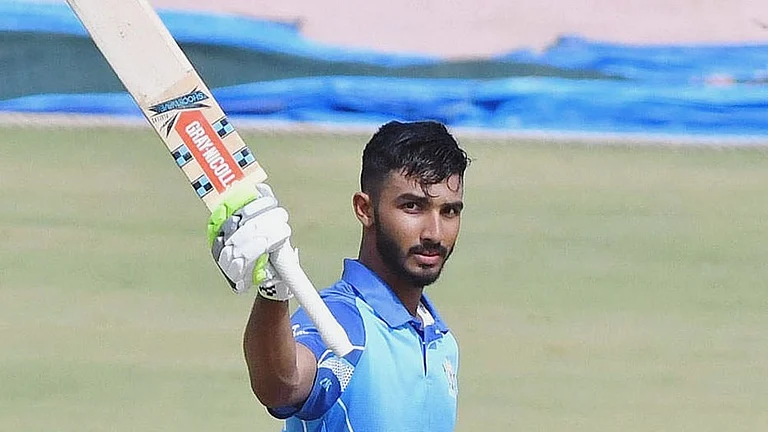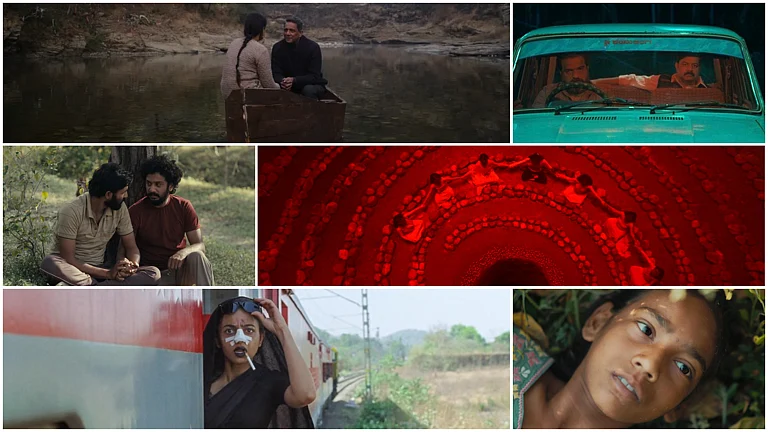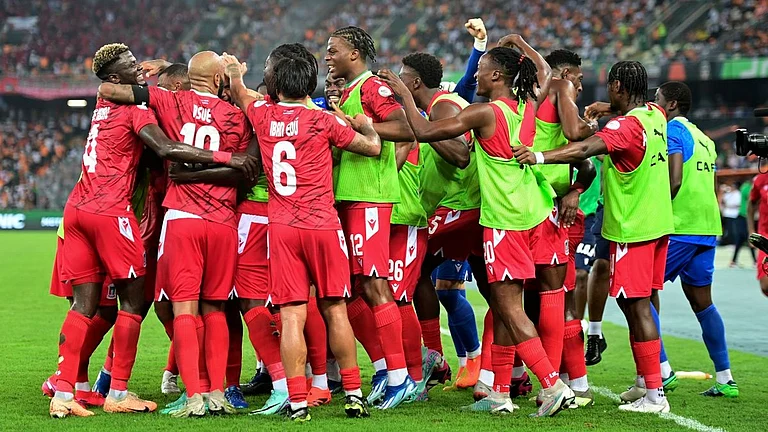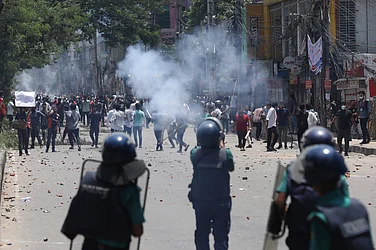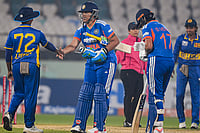—Vali Gujarati, Sufi saint/poet (1650-1707)
On February 28, '02, Vali Gujarati's tomb in Ahmedabad was razed to the ground by Hindu mobs. Overnight, it vanished and a road was paved on the spot where it once stood. On May 1, '06, the less significant and tiny Rashiduddin Chishti dargah on the Fatehpura-Champaner road in Vadodara was razed to the ground. Three bulldozers were used by the city municipal corporation to bring down a mere seven-foot structure. Riots broke out in Vadodara. Six people were killed, each death a grisly reminder of the 2002 riots. Hundreds were injured as the city burnt. Eventually, the Centre had to send the army to keep the mobs in check.
The question now is, why did local authorities indulge in such a blatantly provocative act, destroying a dargah that residents believe is 200 years old? True, it wasn't of great historical value; it was a typical roadside mazaar. Yet it was a religious structure of some vintage. Outlook has a copy of a 1912 city survey record on which the shrine is clearly marked. In the context of the Places of Worship (special provisions) Act passed by the Indian Parliament in 1991, it is illegal to demolish a shrine built before 1947. The act seeks to "prohibit the conversion of any place of worship and to provide for the maintenance of the religious character of any place of worship as it existed on the 15th of August, 1947".
The BJP-ruled municipal corporation claims it has been even-handed towards Hindus and Muslims. Mayor Sunil Solanki has said that a number of roadside temples were removed, so why not the dargah. Civic officials say four such temple encroachments were removed in the Tulsiwadi area of Vadodara on April 3, and a dargah and accompanying temple at Danteshwar on April 21. Again on April 28, two temple-like structures were demolished in Alkapuri and three on Productivity Road a day later.

Then, on April 28, the municipal corporation issued a notice for the demolition of the Rashiduddin Chishti dargah. The residents were violently opposed, so negotiations began. According to advocate Moin Rafi, the community had agreed to reduce the width of the dargah. But even as negotiations were on, the structure was demolished and the city went up in flames.
The administration had meanwhile got a shot in the arm by a controversial ruling of the Gujarat HC. Taking note of a newspaper report, a two-judge bench directed all municipal corporations to demolish all illegal religious shrines encroaching on public spaces. Four days after the violence broke, the Supreme Court again had to overturn the decision of the Gujarat High Court. On May 4, on a plea made by the Centre, a two-judge bench stayed the state HC order.
Although roadside temples had been demolished, they were recent structures. The dargah was built pre-1947. Local residents say the demolition was nothing more than a show of strength by the VHP and local BJP. They had been putting pressure on the administration to pull down a "Muslim shrine" for all the roadside mandirs being destroyed. An eye for an eye. The more the Muslims argued that this was an old structure, the more determined were the VHP-BJP hardliners to destroy it.
Yusuf Sheikh is an active organiser and community leader in Vadodara. He believes the entire episode was pre-planned. "It's not necessary that Modi should give an order. The VHP-BJP have their little factions. They all want to show they are real men. So every now and then, it's useful to attack Muslim symbols." He says the VHP-Bajrang Dal cadre have now realised that they cannot really hurt the community by burning their shops because post-2002 many Muslim businessmen have insured their properties. "So very few shops were targeted. But small traders and those who work out of kiosks and stands were destroyed." Aren't the Muslims too scared to protest? "They get beaten when they are scared, so now they are just getting angry and feeling helpless," says Yusuf.
So was this a "power" statement by the BJP establishment? There is no evidence to show that chief minister Narendra Modi masterminded the episode. But political analysts say once violence erupted, he watched the situation for two days before finally taking action. There's also another theory doing the rounds. It is widely believed that Modi has been doing so well in every byelection and local election that he considers himself invincible right now and would like to prepone the assembly polls scheduled for November 2007. But once the Centre began making noises, Modi quickly realised that without a friendly government at the Centre, instead of polls he may be stuck with President's rule. So after two days of violence, he became the saviour, posing with Muslim victims in hospitals. He warned of stern action against all who took the law into their own hands. The violence ebbed.
Gagan Sethi of the Ahmedabad-based Centre for Social Justice explains the situation. He says the overt exclusion of Muslims continues in small and medium towns, including Vadodara. Any attempt at normalcy is frowned upon by the VHP cadres, now enmeshed in positions of power. "The problem here is that in a communal situation the police really do not know what it's supposed to do. They have to be told it's okay to try and impose a semblance of order. Once Modi decides the violence must stop, it does," says Sethi.
Meanwhile, a political point has been proven. Closer to the polls, more action can be expected in Modi's Gujarat. Sporadic communal flare-ups to keep the blood flowing. Meanwhile, the CM is now said to be in search of that one big emotive issue which enmeshes Hindu and Gujarati pride. No doubt he'll find one, he is a pastmaster at this game.







